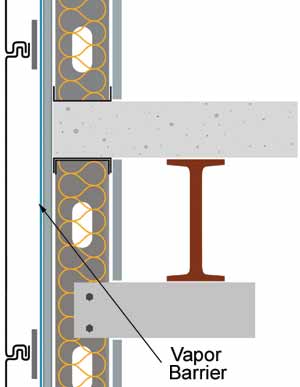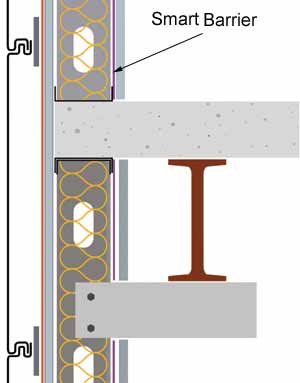Thermal and Moisture Control in Exterior Metal Walls
Moisture Control Designs for Hot and
Humid Climates
In hot, humid southern climates, where moisture is a concern
during the summer, the vapor barrier is installed at the exterior
of the wall system (Figure 5). This layer is frequently a
multipurpose material providing an air, water, and vapor barrier.
Any breaks in this barrier will allow air and vapors to enter
the cavity. The temperature of the metal studs can be below
the dew point when adjacent to interior gypsum, and condensation
will form, causing corrosion, along with insulation and gypsum
board deterioration problems.
|
Moisture Control Designs for Moderate
Zones
In moderate climate zones throughout the U.S., a "smart"
vapor barrier is often installed in the wall system (Figure
6). It is typically located on the interior of the studs and
has characteristics that allow variable amounts of air and
water permeability. When installed correctly, the perm rating
actually changes with the change of relative humidity. During
the winter when RH is low, the perm rating is 1, and during
the summer with high RH the perm rating changes to 10 (Figure
6, Centria #9).
|
4. Multi Component Wall Systems
Multi-component wall systems are made up of numerous individual components that require careful design attention in order to avoid some common challenges related to thermal, moisture, and structural concerns. Typical components and concerns include:











